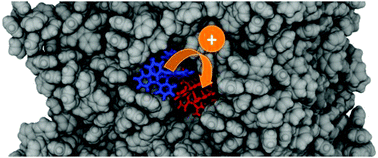Spatial and orientational dependence of electron transfer parameters in aggregates of iridium-containing host materials for OLEDs: coupling constrained density functional theory with molecular dynamics
Abstract
The efficient transport of charge within the bulk of active molecular materials is one of the main factors affecting the efficiency and performance of organic electronic devices. In amorphous molecular aggregates, the observed effective mobility of charge carriers is usually considered as resulting from the convolution of the manifold of intermolecular configurations. In this picture, individual molecules are considered as spherically-symmetric scattering points for charge hopping. Yet, the details of the molecular structure and the topology of the electronic states involved in the charge transport mechanism affect dramatically the intermolecular electronic coupling even in amorphous materials. In this work, we link the morphology of aggregates, in terms of intermolecular configurations, as obtained from atomistic molecular dynamics, to the distribution of diabatic electronic couplings and charge transfer energies, computed by constrained density functional theory simulations. In particular, we focus on aggregates of an organometallic system with multidentate ligands, the iridium complex fac-tris(1,3-diphenyl-benzimidazolin-2-ylidene-C,C2′)iridium(III) (DPBIC), commonly used in OLEDs as host transporter and emitter. Despite the quasi-spherical symmetry of the molecule, our simulations suggest a strong correlation between intermolecular orientation and electronic coupling, indicating a strong impact of the mutual orientation of molecules on charge transport in bulk molecular materials.



 Please wait while we load your content...
Please wait while we load your content...